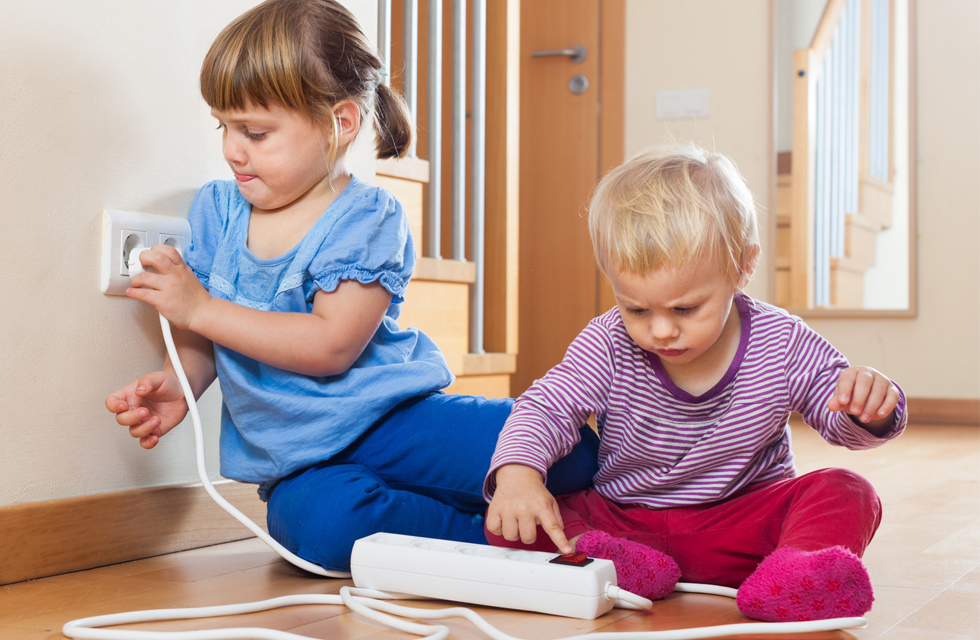Electrical related injuries to children in Australia are rising and around 80% of them happen in the home. So we’ve compiled a basic checklist and some insight into how and what you need to know to prevent them.
The Basics
Let’s start with all the the things you can do yourself around the home to protect yourself and your family.
- Regularly inspect all electrical appliances for faulty switches or frayed/damaged cords and have them repaired or replaced immediately (Never attempt to repair electrical appliances yourself but always have a licensed electrician look at them).
- Never poke anything into an appliance such as toaster or kettle.
- Before cleaning appliances make sure they are switched off and unplugged at the wall.
- Avoid plugging too many appliances into double adaptors or power boards as this can cause fires. Instead have an electrician install some extra power points where needed.
- When using extension cords outside only use ‘outdoor-rated’ cords and when using them inside avoid running them under rugs or carpets.
- Always turn the switch off before replacing lightbulbs.
- Dry your hands before touching any electrical appliances or power points.
- Have a licensed electrician inspect and install RCD Safety Switches in your home to cut the power in the event of electrocution.
Childproofing
Babies and children that are too young to teach about the dangers of electricity need to be protected so it’s up to us to child-proof our homes. As most injuries occur in the kitchen and bathroom areas due to their close proximity to water these are areas to pay particular attention to. Here’s what to look out for;
- Power Outlets – Each should have plastic childproof plugs inserted into them so that nothing can be poked into them.
- Dangling Cords – Any appliance cords that hang to child height should be rolled up and zip tied so that they cannot be pulled down.
- Power Boards – If they cannot be moved out of reach they should at least be replaced with power board that have built in safety switches.
- Portable Chargers – Any portable or mobile chargers and devices should be stored out of reach as these can carry charge even when not plugged in.
- The Final Check – Lastly, the best way to make sure you haven’t missed anything is to get down to their level. Crawling around the home on all fours can help you find all the hidden dangers to babies and toddlers.
Our final reminder for you is – The best thing you can do to protect your children is to teach them how to be safe around electricity.


